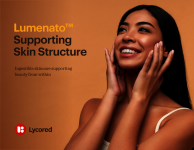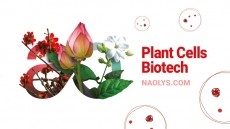Scientists discover bacterial pigment potential to improve SPF

Scientists from Queens University, Belfast, and North Maharashtra University in India found that when evaluating the potential use of the pigments prodigiosin and violacein as additives to sunscreens for protection of human skin, and determining antioxidant and antimicrobial activities, both came out favourably.
“The bacterial pigments were able to increase the SPF of commercial sunscreens as well as the extracts of the two plant species tested and so can have value as ingredients for a new range of sunscreens utilising substances of biological origin,” says one of the researchers, Dr Satish V Patil.
“We discussed the biotechnological potential of these bacterial metabolites for use in commercial sunscreens, and the need for further studies of potential toxicity in mammalian cells,” he tells CosmeticsDesign-Europe.com.
Testing
In the study, prodigiosin and violacein were used to supplement extracts of Aloe vera leaf and Cucumis sativus (cucumber) fruit which are known to have photoprotective activity, as well as some commercial sunscreen preparations.
For each, SPFs were determined spectrophotometrically. Assays for antimicrobial activity were carried out using 96-well plates to quantify growth inhibition of Staphylococcus aureus and Escherichia coli.
Dr Satish says the SPF increase for the commercial sunscreens was by 10-22% when violacein was used as an additive and 20-65% when prodigiosin was used as an additive.
“Similarly, the antioxidant activities of prodigiosin and violacein were approximately 30 and 20% those of ascorbic acid (a well-characterized, potent antioxidant),” he adds.
Expectations
The team expected these results as they are produced by bacteria and inhabit high-UV environments and/or open habitats characterized by high microbial diversity and intense inter-species competition.
“Whereas pigment production can occur independently of light, both prodigiosin and violacein have been associated with enhanced UV-resistance,” continues Patil.
“Regarding antibacterial activity, the pigments are already well known for their antibacterial action so they can also prohibit the skin damage commonly occur due to bacterial infection.”
Patil says there are no imminent plans to formulate these additives into sunscreens however, more work is being done to determine the safety aspect of the pigments for humans.
“Some in-vitro experiments will be carried out to check the cytotoxicity and genotoxicity of the two pigments,” he says.
_____





![YSL's LoveShine launch has sparked a demand surge in Japan. [YSL]](/var/wrbm_gb_food_pharma/storage/images/_aliases/wrbm_tiny/publications/cosmetics/cosmeticsdesign-asia.com/article/2024/04/24/ysl-loveshine-launch-propels-lip-gloss-sales-to-record-highs-in-japan-since-2020/17372064-1-eng-GB/YSL-LoveShine-launch-propels-lip-gloss-sales-to-record-highs-in-Japan-since-2020.jpg)
![There is significant scope for innovation and new launches in the hair repair sector, especially in soaring markets such as China. [Getty Images]](/var/wrbm_gb_food_pharma/storage/images/_aliases/wrbm_tiny/publications/cosmetics/cosmeticsdesign-asia.com/article/2024/04/24/croda-zeroes-in-on-hair-repair-solutions-as-damage-hair-concerns-surge-in-markets-like-china/17362731-1-eng-GB/Croda-zeroes-in-on-hair-repair-solutions-as-damage-hair-concerns-surge-in-markets-like-China.jpg)



![Lubrizol has extended its partnership with C-beauty major PROYA. [PROYA]](/var/wrbm_gb_food_pharma/storage/images/_aliases/wrbm_tiny/publications/cosmetics/cosmeticsdesign-asia.com/headlines/brand-innovation/lubrizol-bullish-on-potential-of-c-beauty-growth-potential/17362515-1-eng-GB/Lubrizol-bullish-on-potential-of-C-beauty-growth-potential.jpg)

![Amika is targeting localised innovation to drive success in SEA. [Amika]](/var/wrbm_gb_food_pharma/storage/images/_aliases/wrbm_tiny/publications/cosmetics/cosmeticsdesign-asia.com/headlines/brand-innovation/amika-on-quest-to-address-diverse-hair-needs-in-sea-with-sea-buckthorn-range/17339003-1-eng-GB/Amika-on-quest-to-address-diverse-hair-needs-in-SEA-with-sea-buckthorn-range.jpg)


